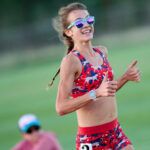Are you up-to-date with all 7 episodes of the Science of Performance podcast from Freetrail and BOA? Hosted by BOA’s Senior Director of Partner Product Design, Dan Feeney PhD, the Science of Performance podcast dives deep into the science that drives us up the hills and down the trails. This companion piece furthers the topic of optimizing running form for performance and injury prevention discussed in Episode 6: Nutrition, Hormonal Cycles, Optimal Biomechanics with Keely Henninger and Kate Harrison.
From running retailers hoping to convince you that there is a perfect shoe for you, to coaches and authors touting keys to improving performance, running form is an inescapable hot topic. Despite being a staple in runners’ lingo, defining what we mean by running form is easier said than done. From hip, knee, and ankle joint angles, to foot strike and stride length, cadence, foot pronation and supination, torso tilt, arm swing, head placement, glute activation, leg swing, lower limb biomechanics and more, examining running form in its entirety would fill a library!
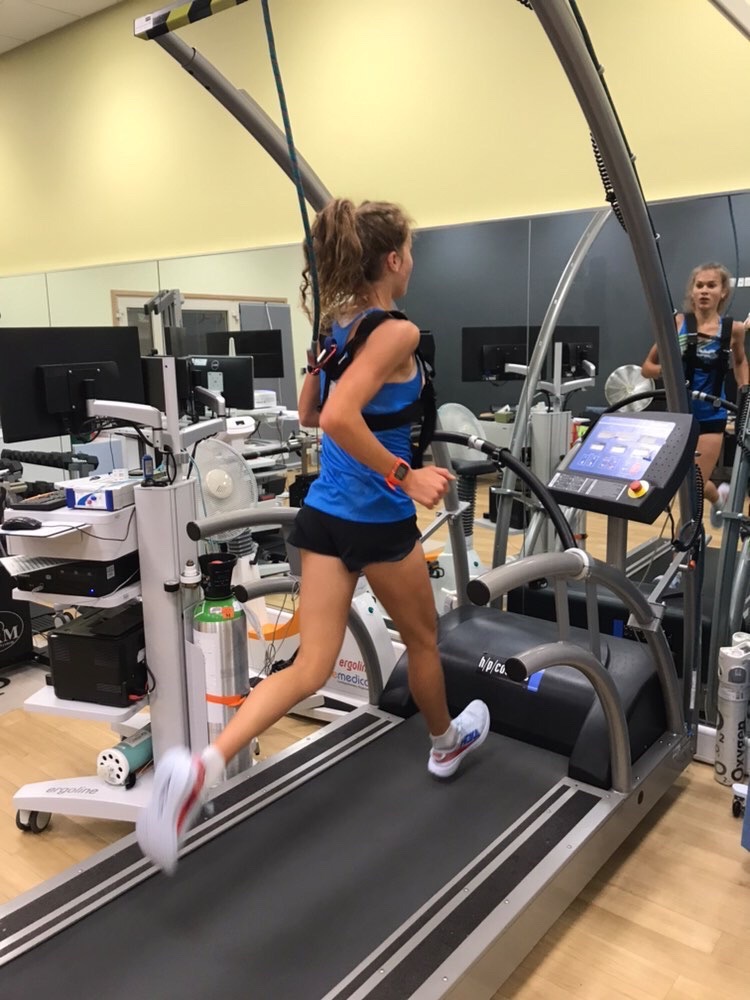
As we unpack whether there really is a perfect way to run, we’re focusing on three popular, yet commonly misunderstood, aspects highlighted in episode 6 of “The Science of Performance” podcast: lower limb biomechanics; cadence, also known as stride frequency; and stride length, specifically overstriding, and their relationship to injuries and running performance.
Lower limb biomechanics
As mentioned in this podcast, Kate Harrison, first author in a 2021 study published to the Journal of Applied Biomechanics, explored how differences in knee biomechanics influenced injuries in novice and experienced female runners. Researchers studied participants’ ankle, knee, and hip joint angles when running on a treadmill at a 10 minutes per mile pace. They concluded that novice runners exhibited less hip adduction, a movement responsible for stabilizing the pelvis and lower limbs during the stance phase of running, as well as assisting hip flexion. This reduced hip adductor activation is often mislabelled by runners as “weak glutes” and cited as the root cause of many running-related injuries, however research here is unclear.
Kate and her team also reported differences in knee biomechanics between novice and experienced runners, with novice runners displaying greater knee internal rotation and abduction. Visually, this translated to knee valgus, where runners’ knees collapsed medially, or inward, increasing the load through the joint and cartilage, often resulting in the knee pain termed “runner’s knee”.
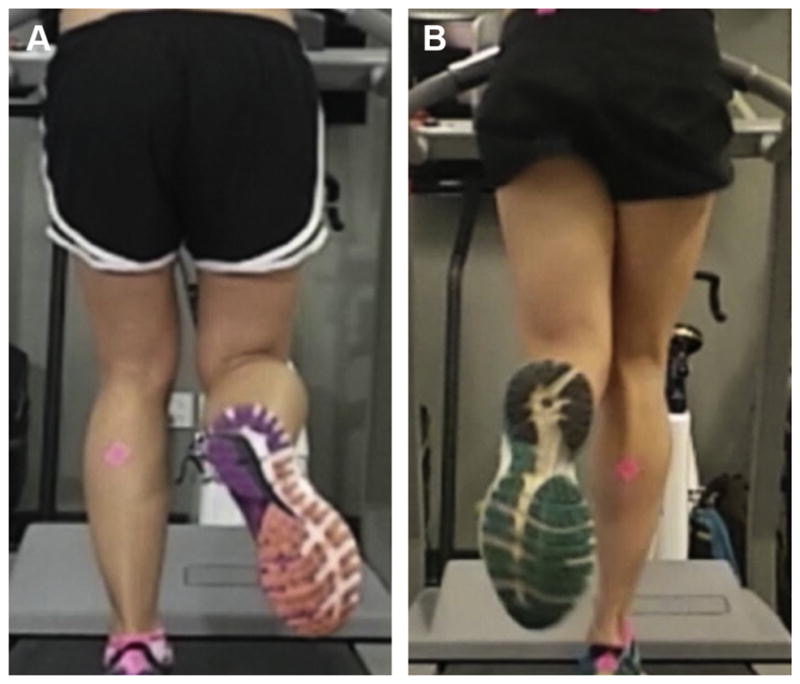
These key differences in novice runners’ hip and knee biomechanics are commonly associated with many of the injuries plaguing newer runners: runner’s knee, ITB syndrome,
So we should focus on increasing hip adduction and reducing knee valgus then? Logically, this makes sense, but the “how” might surprise you. Actively thinking about changing your form, such as consciously attempting to engage your glutes or create a knee window while running are futile approaches that make running more effortful, and may actually predispose you to more injuries. Instead, runners’ injury risk can be reduced through consistent strength training of the posterior chain, quadriceps, and hip musculature, in addition to reducing sitting time. Additionally, as with all niggles and injuries, runners experiencing hip or knee pain should work with a physical therapist rather than trying to change their form on their own.
Cadence
We all know 180 strides per minute is best, right?
If only it was that simple! I’m sure it’s not news to you that the 180 cadence mantra is actually a myth and there truly is no ideal cadence number. You might be surprised to learn that, in fact, the magical 180 cadence number is not grounded in science, but rather from the observations of renowned running coach Jack Daniels. Daniels reported that almost all distance runners competing on the track at the 1984 Olympics adopted a cadence greater than 180, while novice runners favored lower cadences. Together, the Olympic and novice runners averaged a cadence of 180 strides per minute.
While the best runners tended towards higher cadences, that does not mean we should all be trying to increase ours. Daniels’ observational data was only a snapshot into the cadence favored by a small sample of Olympic-level distance track athletes running at high speeds on a smooth, flat, predictable surface.Outside of this very niche scenario, even elite runners adopt a whole variety of cadences above and below 180. Furthermore, research into the impact of gait retaining focused on increasing runners’ cadence reported no effects on performance or running economy, despite changes in running biomechanics, step and loading rate.
It is normal for there to be a lot of intra and interindividual variation in cadence for a number of reasons:
- Anthropometrics and individual differences. Factors like height, limb length, body shape and size mean that different stride patterns suit different runners better. For example, smaller runners tend to favor higher cadences than those with longer limbs. Sex, stage of maturation, and running experience all influence cadence too.
- Speed. To move faster, runners must increase both their stride length and stride frequency, also known as cadence. In general, as individuals increase their running speed, they also naturally increase their cadence. Thus, trying to maintain a set cadence will likely lock you into a set pace range and limit your progress.
- Terrain and inclines. Different surfaces require different stride patterns to optimize performance. Compare trail runners with track athletes and you’ll notice big variations in cadences, even among the world’s best: the long, loping strides of athletes running laps on the smooth and consistent track surface, are inefficient and disadvantageous to trail runners navigating unpredictable, changing terrain. Similarly, cadence is impacted by the gradient you are running on. Downhill running is often characterized by short, fast feet, whereas when going uphill, runners’ cadences likely fall.
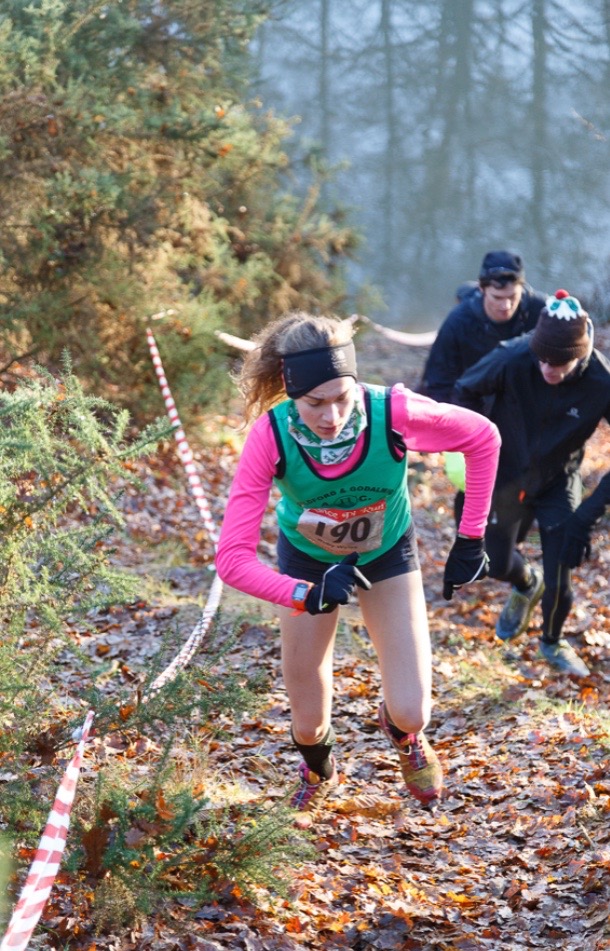
So how should you think about cadence?
In short, you shouldn’t! Allow your cadence to vary with terrain and running speed, and, as we’ll discuss next, where your foot lands in relation to your center of mass is a lot more important than how many steps you take each minute. However, if you do find yourself on either cadence extreme, for example above 200 or below 150 strides per minute and repeatedly injured, best to consult with a running PT, as Dr Kate and Keely suggested in Episode 6 of “The Science of Performance” podcast.
Stride length
Many of the same variables influencing cadence also impact stride length. Similarly, it is normal and expected for there to be considerable intra- and inter variability in stride length for much the same reasons: anthropometrics, running speed, terrain, inclines, and more. However, there is substantial research in favor of preventing overstriding, which occurs when the foot lands ahead of the body, outside a runner’s center of mass. Instead of contacting the ground with your shin vertical and foot underneath you, a runner’s ankle lands well ahead of their knee and pelvis.
Overstriding subjects the body to higher impact forces and loading rates upon footstrike than landing within one’s center of mass does: these increased forces have been linked with higher injury rates. Rather than being controlled by the muscles of the glutes, quads, hamstrings, and calves, these forces are absorbed directly by the bones and tendons, explaining the association between overstriding and ankle and knee pain, as well as foot and lower limb bone stress injuries. Additionally, running economy is impaired as the body has to travel further from foot contact over their outstretched angled shin to toe off, requiring more energy than if the foot had landed directly underneath the runner.
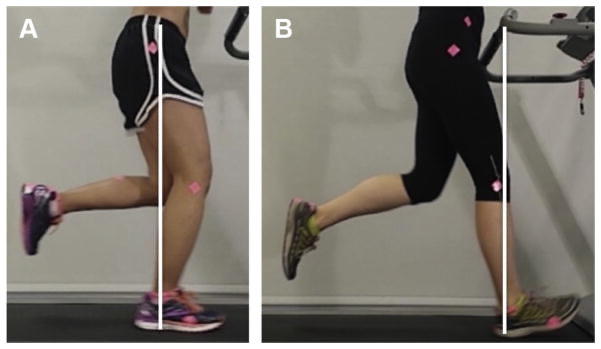
While many runners manipulate their stride length and foot strike to try to reduce their risk of injuries and improve performance, it may actually do the opposite! Recent research suggests that modifying runners’ stride length and/or foot strike is associated with increased injuries due to altered mechanics. The caveat to this is in the case of pronounced overstriding with a history of injuries.
Preventing overstriding
For the overstriding runner experiencing pain and injuries, or the overstriding runner looking to optimize performance, working with a PT to reduce your stride length is recommended. Decreasing stride length is commonly achieved by increasing stride frequency, or cadence, and strengthening the muscles that control foot strike.
- Increasing cadence: Rather than trying to hit a universal cadence number, such as that not-so-magic 180, focus on increasing your customary cadence by 5-10%. One strategy is running to a metronome set to your goal cadence, syncing foot strike with the metronome beat.
- Strength training: Improving the strength of your glute, hamstring, quad, and calf muscles will help better control the leg throughout the gait cycle, as well as reducing the load directly transmitted to the bones and joints upon foot strike. Additionally, work to resolve any hip flexors tightness, and improve mobility about the ankle and big toe.
The perfect running form: from parts to whole
Looking at what all 3 – lower limb biomechanics, cadence, and stride length – have in common paints a revealing picture of how we should think about running form in general: unfortunately, there is no one size fits all, no perfect running form to prevent all injuries and improve performance overnight. A bit of a let down, yes, but if you’ve got this far, it’s hopefully not surprising!
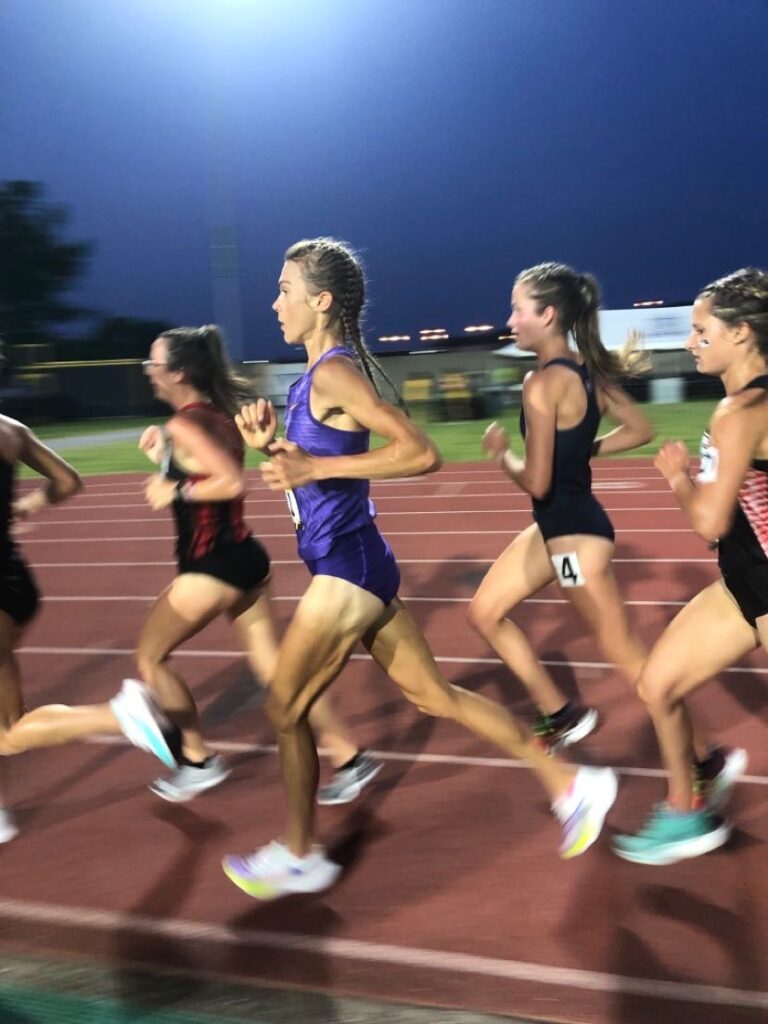
Echoing what Dr Kate Harrison and Keely Heninger emphasized in episode 6 of “The Science of Performance” podcast, unless you are currently injured or have a long injury history, there really is no need to obsess about your running form or actively be trying to change it. Instead, for both performance and injury prevention, all runners would benefit from incorporating strength training into their weekly routine, trusting that their bodies’ will intuitively find their most efficient form, allowing it to change based on the variables discussed: terrain, incline, speed, etc, as well as across your lifespan.
Finally, in the case of the injured runner, the best advice is to work with a physical therapist and/or strength coach who specializes in runners.
References
- Harrison, K., Sima, A., Zernicke, R., Darter, B. J., Shall, M., Williams, D. S. B., & Finucane, S. (2021). Comparison of frontal and transverse plane kinematics related to knee injury in novice versus experienced female runners. Journal of Applied Biomechanics, 37(3), 254–262. https://doi.org/10.1123/jab.2020-0140
- Doyle, E., Doyle, T. L. A., Bonacci, J., & Fuller, J. T. (2022). The effectiveness of gait retraining on running kinematics, kinetics, performance, pain, and injury in distance runners: A systematic review with meta-analysis. The Journal of Orthopaedic and Sports Physical Therapy, 52(4), 192–A5. https://doi.org/10.2519/jospt.2022.10585
- Taylor-Haas, J. A., Garcia, M. C., Rauh, M. J., Peel, S., Paterno, M. V., Bazett-Jones, D. M., Ford, K. R., & Long, J. T. (2022). Cadence in youth long-distance runners is predicted by leg length and running speed. Gait & Posture, 98, 266–270. https://doi.org/10.1016/j.gaitpost.2022.09.085
- Garcia, M. C., Heiderscheit, B. C., Murray, A. M., Norte, G. E., Kraus, E., & Bazett-Jones, D. M. (2022). One size does not fit all: Influence of sex and maturation on temporal-spatial parameters for adolescent long-distance runners. Journal of Sports Sciences, 40(19), 2153–2158. https://doi.org/10.1080/02640414.2022.2142743
- Davis, I. S., & Futrell, E. (2016). Gait retraining: Altering the fingerprint of gait. Physical Medicine and Rehabilitation Clinics of North America, 27(1), 339–355. https://doi.org/10.1016/j.pmr.2015.09.002
- Souza R. B. (2016). An evidence-based videotaped running biomechanics analysis. Physical Medicine and Rehabilitation Clinics of North America, 27(1), 217–236. https://doi.org/10.1016/j.pmr.2015.08.006
- Daniels J. (2005). Daniels’ running formula : [proven programs 800m to the marathon] (2nd ed.). Human Kinetics.
- Schubert, A. G., Kempf, J., & Heiderscheit, B. C. (2014). Influence of stride frequency and length on running mechanics: A systematic review. Sports Health, 6(3), 210–217. https://doi.org/10.1177/1941738113508544
- Heiderscheit, B. C., Chumanov, E. S., Michalski, M. P., Wille, C. M., & Ryan, M. B. (2011). Effects of step rate manipulation on joint mechanics during running. Medicine and Science in Sports and Exercise, 43(2), 296–302. https://doi.org/10.1249/MSS.0b013e3181ebedf4
